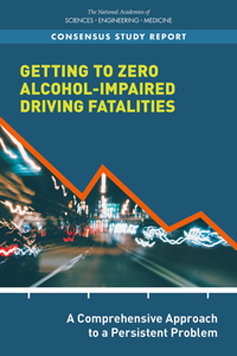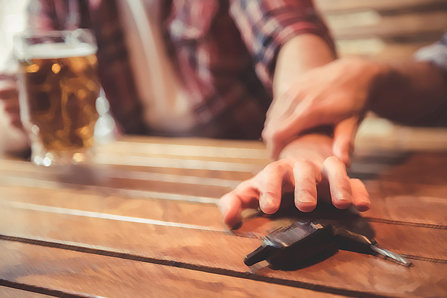“Getting to Zero Alcohol-Impaired Driving Fatalities” — Realistic or Overly Optimistic?

When people talk about reducing the harm done by alcohol or drugs, there always seems to an assumption that some people are always going to use these substances harmfully. No matter what you do, some people will die in the driver’s seat after leaving the bar or some young people will accidentally overdose on painkillers. That’s why I found it so refreshing that one group is on a mission to reduce alcohol-related traffic deaths to zero.
That group is the National Academies of Science, Engineering and Medicine (shorter name: the National Academies). In January 2018, they released a proposal for the strategies they felt would accomplish this commendable goal. The title of the report is Getting to Zero Alcohol-Impaired Driving Fatalities. They refer to this plan as Vision Zero.

Admirably, this report takes a completely holistic look at the problem and its solutions. The authors note that many of the strategies needed to make improvements in this area already exist and only need stronger emphasis, wider implementation or stronger coordination between multiple sectors that are already working to solve the problem.
The entire report stretches over 520 pages and, of course, takes a look at the extent of the problem and includes plenty of science related to drinking and driving. The authors considerately distill the most important facts and recommendations down to two sides of a single sheet of paper.
You can download this document, Key Facts and Recommendations, here.
Here’s some highlights from this report.
Key Statistics
- We lose one American every 49 minutes as a result of an alcohol-related traffic incident.
- Those who lose their lives in this way include drivers, passengers, pedestrians and bicyclists.
- Forty percent of the time, it’s not the impaired driver who loses his life.
- Rural areas are disproportionately affected.
- Drivers aged 21 to 25 account for 40% of these crashes.
- Binge drinking is strongly associated with alcohol-impaired driving.
Key Recommendations
- Increase alcohol taxes significantly
- Limit or reduce the number of alcohol sales outlets and their hours
- Reduce the legal limit for driving to 0.05 percent blood alcohol concentration (BAC). The current level in nearly every state is 0.08.
- Conduct sobriety checkpoints and publicize these events
- Support transportation alternatives for those who drink, especially during nighttime and weekend hours
- Extend these transportation alternatives to rural areas
- Implement DWI courts in all areas
- Require ignition interlocks for all offenders with a BAC above the legal limit
- Involve healthcare providers and insurance companies to ensure that a person who can’t control his (or her) drinking has access to treatment
Of course, there are many other recommendations that would not be as visible to the drinking and driving public. They mostly involve data collection, interagency coordination or model laws that can be proposed.
A Comparison to Sweden
In their proposal, the National Academies authors compare their efforts to those of Sweden. In a similar way, Sweden set out to reduce their number of alcohol-related traffic deaths. They didn’t just admonish drivers to not drink and drive, they also addressed vehicle technology and road design. A major part of the success of this effort also related to the country’s ability to create a social norm in which impaired driving is not only rare, but it is also seriously frowned upon.
The Swedes have a similarly intolerant viewpoint toward drug abuse. The goal of the country’s drug policy is to have a society free from narcotics and doping. As a result, they have a generally low rate of drug abuse. Among youth aged 15 to 16, the rate of alcohol use or cannabis consumption is about half the rate of the rest of the European Union. Use of other illicit drugs is also significantly lower among this group.

Would Americans ever accept the implementation of these recommendations?
Alcohol consumption is deeply embedded in our culture. It might be quite a battle to implement all the recommendations in this report.
However, ask a family that lost a mother, father or child to a drunk driver. Or talk to college students who suddenly lost an entire carful of their best friends after a drunken party. Once the impact of the loss of life hits you—and maybe if you realize these recommendations could possibly save your own life one day—they might begin to look more acceptable. It’s going to take a considerable amount of education to convince people to change the way they think about alcohol and driving. I like very much to think that it can be accomplished.
You can download the entire report here.


 ®
®